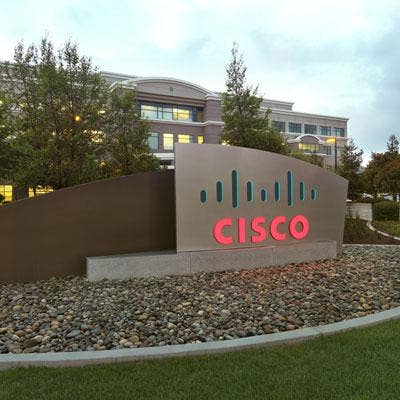13 SDN Startups To Keep An Eye On In 2013

What's Next For SDN?
Software-defined networking (SDN) was the major network industry trend of 2012, and in 2013, it's expected to be even more prevalent as SDN technologies move into proof-of-concept deployments.
In recent months, a number of SDN startups have made major product launches, entered new markets and/or emerged from stealth mode, all part of a market that researcher IDC says will reach $2 billion by 2016. Other companies, such as Nicira, Vyatta and Contrail Systems, have been acquired by bigger players -- a trend of M&A that SDN watchers expect to continue over the next 12 months. Here are 13 SDN startups that bear watching, many of which have begun to define channel strategies, too.

Adara Networks
CEO: Eric Johnson
"Full-stack network" provider Adara Networks has one big advantage over its SDN startup brethren: a fully-defined channel strategy that includes not only product moving through resellers and systems integrators but also two-tier distribution and a mapped-out channel go-to-market approach. Adara CEO Eric Johnson told CRN in the fall that the company is in play.

Big Switch Networks
CEO: Guido Appenzeller
Other than Nicira, which was acquired by VMware in July 2012, no SDN startup has been more talked about than Big Switch Networks, a major proponent of the OpenFlow communications protocol and already admired for the major industry talent it's attracted.
Big Switch in November confirmed general availability of its controllers, platforms and applications, and it also told CRN the company plans to sell 100 percent through integrator partners down the line. Its portfolio includes Big Virtual Switch, which dynamically provisions virtual networking segments, Big Tap, which provides monitoring functions, and Big Network Controller, an open SDN application platform.

ConteXtream
CEO: Nachman Shelef
Founded in 2010, ConteXtream in December 2011 launched the ConteXtream Grid for Cloud and Managed Hosted Providers, a distributed virtual Layer 4-7 switch that deploys as an overlay to existing network infrastructure. Its technology -- which it claims connects an unlimited number of network endpoints to a "flat" infrastructure -- could prove an attractive M&A target for one of the larger infrastructure providers.

Cyan
CEO: Mark Floyd
Cyan has been around longer than most of the SDN startups on this list, but it's attracted new attention thanks to its focus on bringing SDN technologies to the telecom/service provider space. Founded in 2006 to provide optical networking equipment for telecoms, Cyan in November released Blue Planet: controller software that can, according to the company, work with any vendor's switches and infrastructure as well as APIs for connecting Cyan's controller software to network hardware.

Embrane
CEO: Dante Malagrino
Embrane's argument is that too many SDN companies are focused on Layer 2 and Layer 3 networking functions. The three-year-old company in December 2011 launches Heleos, a distributed software platform that moves the programmable networking attributes most SDN companies promote into Layer 4-7 networking, offering such functions as load balancing and VPN.
Dante Malagrino, Embrane's CEO, told attendees at the Raymond James IT Supply Chain Conference in December that education remains the biggest hurdle for broader SDN adoption.
"It will get even more challenging," he said. "Everyone has a play in SDN now."

Insiemi
Will we get more details on Insiemi this year, or will Cisco continue to be as cagey as it was throughout 2012?
Insiemi is an SDN startup that appears to be a Cisco "spin-in," meaning it is a company to which Cisco provides startup money and top-flight engineering talent and then plans to acquire after product is fully baked. Cisco hasn't offered many more details on Insiemi's products apart from vague discussion of programmable networking, but with Cisco's role in the evolving SDN ecosystem proving to be a major topic for 2013, perhaps more is coming.

LineRate Systems
CEO: Steve Georgis
LineRate Systems came out of stealth mode during last year's Open Networking Summit, offering software that delivers services on top of virtualized networks with the ability to work on platforms running commodity x86-based servers.
John Giacomoni, founder and CTO, recently told SDN Central that LineRate's key difference from other SDN players is providing programmability in all network layers. "Customers win when they can extend the network’s capabilities with their own proprietary logic," he explained.

Midokura
CEO: Dan Mihai Dumitriu
SDN startups are hardly restricted to the United States, as evidenced by Midokura, a Japanese company that entered the U.S. market in October. Core to its offering is MidoNet, a distributed, decentralized virtual platform that uncouples a customer's cloud assets from its network infrastructure hardware and offers a software abstraction layer programmed to go between end hosts and a physical network.

Pertino Networks
CEO: Craig Elliott
Pertino in September 2012 confirmed plans to release SDN technology that lets small businesses essentially build their own networks in the cloud. Todd Krautkremer, vice president of marketing, said that having no local IT infrastructure -- that is, having all or almost all of a customer's critical IT infrastructure in the cloud -- is immensely appealing to startups, which is why the company is targeting the 10-to-250 user segment.

Plexxi
CEO: David Husak
Plexxi was among several buzzed-about SDN startups to officially launch in December, and what it's pushing is a concept called "affinity networking." Plexxi, which has locked up nearly $50 million in venture funding, is in the market with Plexxi Control, sever-based software that can dynamically and continuously compute network connectivity to tailor it based on infrastructure workloads, and Plexxi Switch 1, a set of physical switches that offer low-latency 10-Gb and 40-Gb Ethernet access and also connect with each other using an optical interface called LightRail.

Plumgrid
CEO: Awais Nemat
Startup Plumgrid, which is developing interconnect technology for controlling distributed infrastructure, has made some noise lately thanks to a $10.7 million venture capital round in August. It's also made some big hires: Cisco veteran Lele Nardin as vice president of engineering and former Dell North America Network sales head Kash Iftikhar as vice president of sales and business development.

Pica8
CEO: James Liao
Pica8's approach to SDN is what it calls an "open SDN reference architecture" -- essentially a blueprint for cloud providers to combine switches with an OS and an OpenFlow controller. Pica8 was spun out of server vendor Quanta a year ago, and offers a virtualized network switch built with merchant silicon. Its reference architecture uses Open vSwitch 1.7.1, version 1.2 of OpenFlow in an operating system called PicOS, and the Ryu 1.4 OpenFlow Controller designed by NTT Laboratories.

vArmour Networks
The still-somewhat-mysterious vArmour was founded by NetScreen veterans and is tackling what will no doubt be a pressing problem in the years ahead: securing OpenFlow and SDN environments. The company hasn't said all that much about what its products and services do, but it has launched a private beta program.